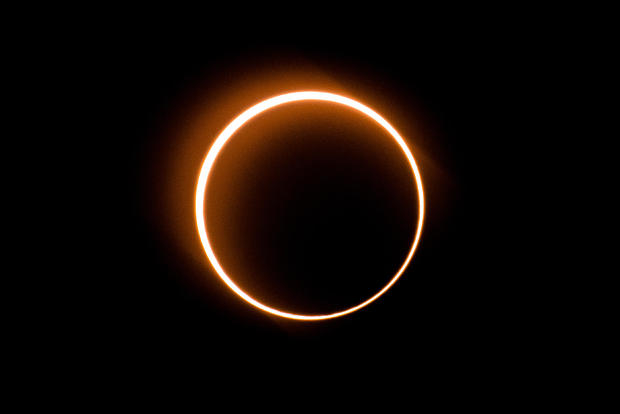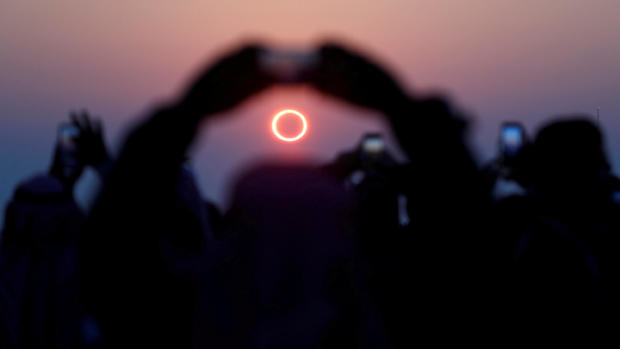Last month's "super flower blood moon" lunar eclipse was hardly the only exciting celestial event of the season. Next week brings an even bigger spectacle — a rare "ring of fire" solar eclipse.
On June 10, skywatchers all over the world will be able to view the eclipse.
What is an annular solar eclipse?
A total solar eclipse occurs when the moon passes directly between the Earth and the sun, completely blocking the sun's light. During an annular solar eclipse, the moon does not completely cover the sun as it passes, leaving a glowing ring of sunlight visible.
An annular eclipse can only occur under specific conditions, NASA says. The moon must be in its first lunar phase, and it must also be farther away from Earth in its elliptical orbit, appearing smaller in the sky than it usually would.
Because the moon appears smaller under these circumstances, it cannot fully block out the sun, forming what's called a "ring of fire" or "ring of light."
"As the pair rises higher in the sky, the silhouette of the Moon will gradually shift off the sun to the lower left, allowing more of the Sun to show until the eclipse ends," NASA said.
How to watch the annular solar eclipse
Thursday morning, June 10, makes the new moon, which will eclipse the sun at 6:53 a.m. ET. To see it, look to the east.
The narrow path of the eclipse will be completely visible in parts of Canada, Greenland, the Arctic Ocean and Siberia. It will be partially visible for much of the rest of northeastern North America, Greenland, Northern Europe and northern Asia.
From the Washington, D.C. area, the moon will block about 80% of the left side of the sun as they rise together in the east-northeast at 5:42 a.m. The sun will appear as a crescent during this time, NASA says.
"From any one point along this annular solar eclipse path, the middle or annular or 'ring of fire' stage of the eclipse lasts a maximum of 3 minutes 51 seconds," according to EarthSky.
The event will conclude around 6:29 a.m. ET.
It is essential to wear special solar eclipse glasses to protect your eyes while viewing the celestial phenomenon. Looking directly at the sun is dangerous and can damage your eyes.
This is just one of two solar eclipses in 2021. A total solar eclipse will be visible on December 4.
And don't worry if you miss it — you can just catch up with a livestream instead.
https://ift.tt/3uKdulM
Science


No comments:
Post a Comment